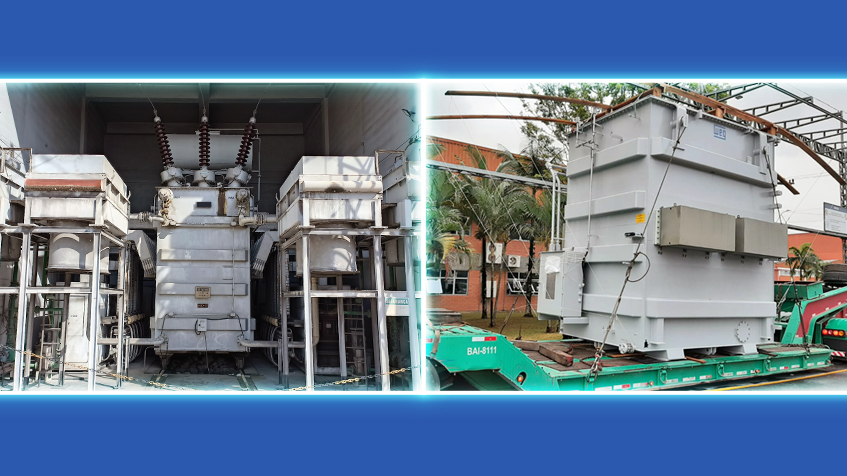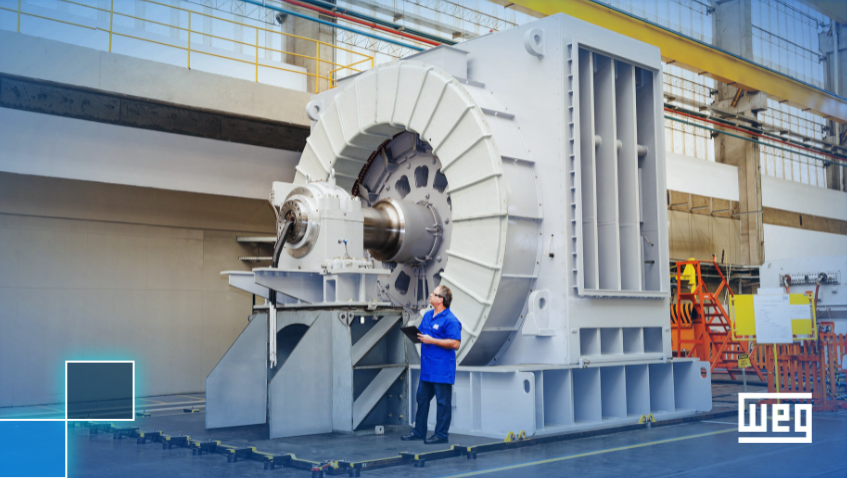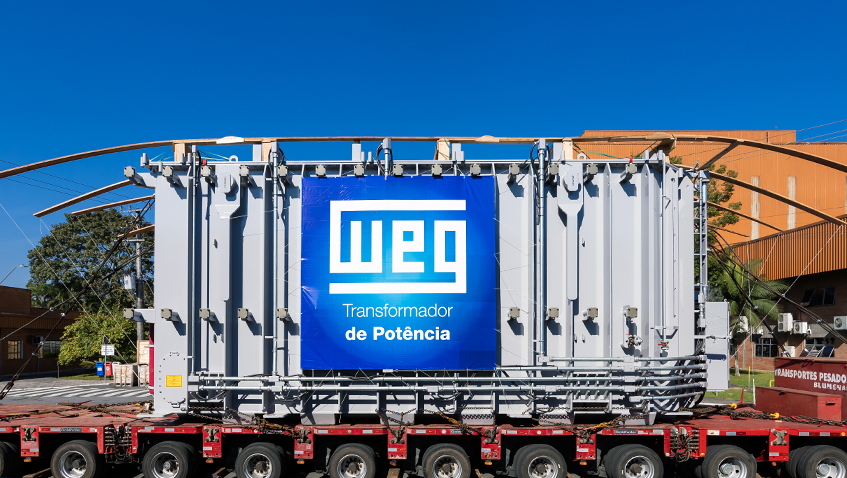“We have brought many transformers into South Africa, but taking a transformer into the DRC is a completely different ball game, especially in terms of logistics,” Gary Daines, projects director of Zest Electric Motors says.
“Just to begin with, the transformers moved through South Africa to Botswana then into Zimbabwe and through Zambia to the DRC. This meant clearing customs both on entry and exit from each country. In addition, road transportation of over more than 3 500 km, with varying levels of infrastructure, added to the challenge.”
The two largest WEG transformers supplied to date by Zest Electric Motors are to be installed and commissioned just outside Lubumbashi. Such was the mass of the transformers, with tanks weighing 90 t each, that the units were shipped on a special vessel to accommodate the mass of the main tanks.
The components and accessories were housed in six containers which travelled with the road convoy. “Planning was a major challenge as it was difficult to assess exactly how long the abnormal transport would take, and it was necessary to ensure that the convoy and technical personnel were available on site when the transformers arrived,” Daines says.
A good example of the importance of precise timing is that the oil for the transformers could not be sent up too early as the on-site standing time needed to be minimised as much as possible.
“We fine-tuned the planning as much as possible however some circumstances, such as a state funeral in Zambia which meant the closure of the borders for two days, were completely beyond our control. However, it must be noted that solid scheduling on the part of all enabled the planning to proceed without too many untoward issues,” Daines says.
Daines adds that another instance where careful planning was also essential was on the site itself as there was no electrical supply available. “A competent rigging team with the necessary equipment travelled to site from South Africa. Fortunately other construction activities in the region meant that we were able to hire in a mobile crane to assist in handling the large transformers.”
The two units were ordered by Anvil Mining as part of its support for the development of improved power infrastructure in Lubumbashi, the capital city of the Katanga province in the DRC, and will become the property of SNEL, the local utility provider in the DRC.
Since receipt of the order for the Anvil transformers when the number of transformers sold by Zest stood at 150, the company’s reference list has grown to well over 300 units. This is significant as Zest only entered the transformer market in 2004. Daines says this success can be attributed to a number of factors, including Zest’s customer focused approach, its understanding of the market and the flexibility it is able to offer through its partnership with WEG in meeting customer specific requirements.
An example of this flexibility is how Zest was able to meet Eskom’s specific requirements. In one of its biggest contracts ever, Zest will supply a total of 67 transformers, ranging from 2.5 MVA to 80 MVA to Eskom. “Securing this contract is testament to the quality of the WEG range of transformers as well as the ability to meet the tight delivery schedule,” Daines says.
The contract is part of the electricity utility’s ambitious infrastructure upgrade programme to boost its capacity to meet the growing local demand for power in the face of a tight electricity network situation, and the looming 2010 FIFA Soccer World Cup.
Daines says Zest is ideally positioned to become a major player in the transformer market as a critical factor of Eskom’s infrastructure programme is the tight timeframe meaning suppliers have to adhere to stringent deadlines.
“WEG recently expanded its production facility in Brazil which means we are able to meet Eskom’s tight deadlines with ease,” he says. “The Eskom orders are a particular feather in our cap because the electricity utility has centralised its procurement processes so as to be better able to meet its black empowerment criteria amongst others. This involved evaluating suppliers from a global benchmarking perspective. Zest met all the new requirements and specifications.”
Apart from supplying the transformers, which will be distributed countrywide as far afield as Umtata, Durban, Cape Town, Newcastle, Margate and Dwaalboom, Zest will also be responsible for installation and commissioning. Daines says this will be sub-contracted to locally established companies, with key personnel such as senior site supervisors having received hands-on training at WEG in Brazil.
The transformers for Eskom, which utilise the latest design and technology, will be custom made. Eskom used an external consultant to review the specifications, and also sent a team to WEG in Brazil to vet the final designs. Several general design features have been incorporated into the WEG range of transformers, which has established them as the technology benchmark in the local sector.
An example is the design of the lockable offload tap changer which enhances safety and durability. The tap changer’s ergonomic design also means it is conveniently positioned, well within the operator’s reach. An innovative pressure-relief device channels the oil away from the transformer into the pit without it coming into contact with personnel, which also prevents contamination.
A corrosion resistant paint specification developed in-house means the WEG range of transformers can cope with the most aggressive environmental requirements. This has resulted in a product life expectancy of 25 years, emphasising the durability and reliability of the transformers.
Apart from power generation, Daines says that transformers are becoming increasingly important in general industry and mining, where they play a vital role in ensuring that electrical energy is available continuously at the appropriate voltage. “The fast lead times and support we offer has resulted in Zest becoming the supplier of choice for transformers in South Africa,” Daines says.
Ensuring top quality
WEG transformers are manufactured at WEG Transformadores in southern Brazil. These modern production facilities are 22 375 m2 in extent and house state-of-the-art machines and equipment. Power transformers, auto-transformers and reactors are produced for a wide range of applications with ratings up to 300 MVA and voltages up to 550 kV, and are optimised to meet customer specifications with a focus on reducing energy losses and noise levels as well as optimising dimensions and weight.
Sterile laboratory conditions and state of the art technology at this facility are in place to ensure that optimum quality standards are met at all times.
Over 50 engineers and technicians are permanently involved in product research and development. Modern technical and computational tools are used and the plant itself is equipped with modern machinery to ensure fast and efficient production processes.
Daines explains that the high degree of vertical integration in the processes contributes significantly to the facility’s ability to meet tight deadlines, and control quality assurance throughout the manufacturing process.
WEG operates its own wire drawing plant which produces over 1200 t per month, and wire applied on transformers is covered with thermally upgraded paper (20 degrees C – Class E). The winding assembly follows rigorous quality standards and high levels of cleanliness, high quality parts and tight manufacturing tolerances ensure very low impedance variation.
The WEG design uses a core type transformer with silicon cold rolled magnetic sheets and this allows the thickness to be reduced to as low as 0.27 mm or 0.23 mm. The core clamping method is designed to create an even pressure to keep the core sheets together and give support to the windings. This robust design gives short circuit strength and improved transportation safety.
Assembly of WEG transformers is done in a controlled atmosphere and the facility’s ventilation and refrigeration system has filtered air insulation. A modern vapour drying plant is used for drying active parts which Daines says is considered one of the best methods for effective drying of transformers due to its optimum drying quality and shorter drying cycle. This process not only ensures shorter delivery time but the perfect dryness leads to enhanced transformer life.
A completely separate area within the facility is dedicated to the production of clamping devices, tanks, radiators and other structural components. All these are coated with high specification paint that is also produced at one of the WEG companies.
Testing of transformers is considered vital and this is done in a strictly controlled modern test facility. All transformers are subjected to routine tests and measurements specified in accordance with IEC and ANSI specifications. The routine tests are complemented by type and special tests which are carried out at customer requests or as part of an internal sampling procedure to monitor quality on an ongoing basis.
Quality control is carried out at each stage of production on a self-assessment basis with overall monitoring by the quality assurance department. WEG works closely to ISO 900 standards and is ISO 9001:2000 accredited.
Extensive Reference Base
The first WEG transformers to be brought onto African soil were installed and commissioned at Hernic Ferrochrome in 2004, and these two units (one a 10MVA and the other a 7.5 MVA unit) were followed by installations at Engen Refinery, Impala Platinum, Sasol Coal, Bogoso Gold, Spoornet, Toyota SA, Saldanha Bay Bulk Terminal, Mondi, Illovo Sugar Zambia, Kumba Resources’ Sishen Expansion Project and Lumwana to name a few.
Daines says this extensive reference base attests to the company’s ability to offer the flexibility required by the market, and its solid partnership with WEG where production processes can accommodate specific application requirements without impacting on lead times.
“It is our phenomenal record for on-time delivery that has enabled us to capture a large portion of the market,” he says. “Customer feedback has also shown that the physical size and dimensions of WEG transformers are more compact than traditional designs, and this allows considerable flexibility when placing the unit in confined envelopes. In addition, we are able to offer adjustment to the mechanical dimensions to suit specific space envelopes for individual customers.”




